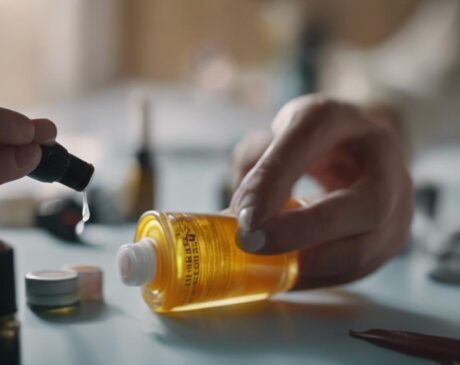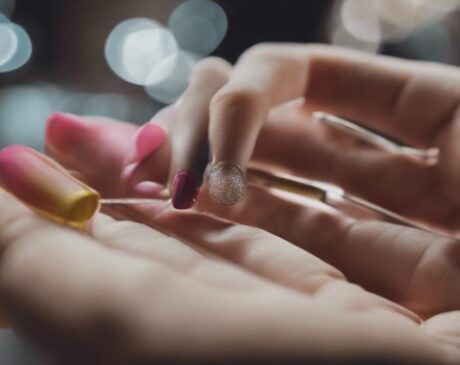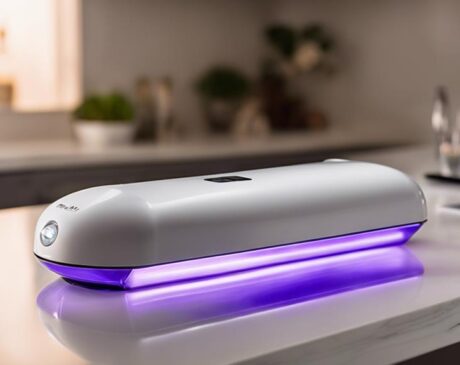Which Is Better UV or LED Nail Lamp?
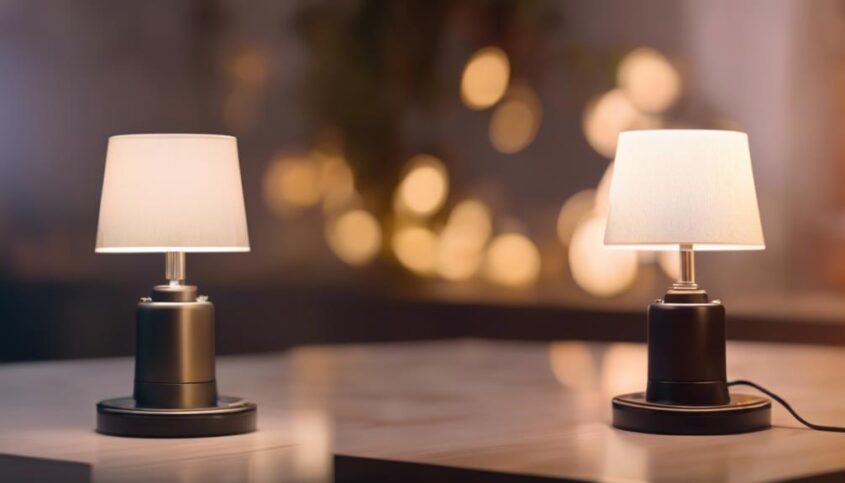
LED nail lamps are better than UV lamps due to their faster curing times, lasting up to 50,000 hours, and lower energy consumption. LED lamps are more cost-effective, minimize health risks such as UV exposure, and promote nail health by emitting lower levels of UV radiation. Additionally, they have a lower environmental impact, being more energy-efficient and generating less waste compared to UV lamps. Consider these factors when deciding between UV and LED nail lamps to make the best choice for efficiency, durability, cost-effectiveness, health, and environmental consciousness. Make an informed decision based on these key points.
Key Takeaways
- LED nail lamps offer faster curing times, saving time and enhancing efficiency in salons.
- LED lamps are more durable, lasting up to 50,000 hours with solid-state construction.
- LED lamps are energy-efficient, cost-effective, and do not require warm-up time.
- LED lamps pose minimal health risks compared to UV lamps, reducing skin damage.
- LED lamps have a lower environmental impact, being more energy-efficient and producing less waste.
Curing Time Comparison
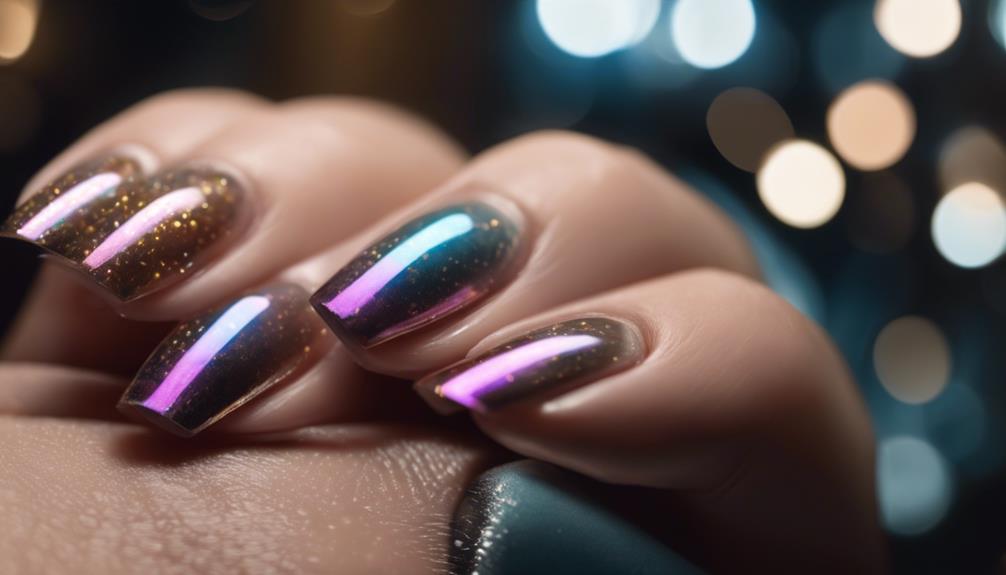
When comparing UV and LED nail lamps, the curing time is a critical factor to consider in determining their efficiency. LED nail lamps are renowned for their rapid curing times, often requiring only 10 to 60 seconds per coat of polish. This quick curing process not only saves time but also enhances the overall efficiency of the manicure or pedicure service. In contrast, UV nail lamps typically take longer to cure the nail polish, ranging from 2 to 3 minutes per coat. The significant difference in curing times between UV and LED lamps is a key point of consideration for nail technicians and salon owners looking to optimize their workflow and increase customer turnover.
LED technology's ability to produce instant curing results not only streamlines the nail treatment process but also reduces the risk of smudges or imperfections caused by longer curing times. This innovation in curing time has revolutionized the nail industry, offering a more efficient and time-saving solution for both professionals and clients seeking quality nail services.
Durability and Longevity Factor
When comparing the durability and longevity of UV and LED nail lamps, it is essential to consider factors such as the lifespan of the bulbs and the overall robustness of the device. Understanding how these elements differ between UV and LED lamps can help users make informed decisions regarding their investment in nail care equipment. By examining the durability and longevity aspects, users can determine which type of lamp aligns best with their needs for long-term use.
UV Vs LED Lifespan
Comparing the durability and longevity factors of UV and LED nail lamps reveals crucial differences in their lifespan. LED nail lamps typically have a longer lifespan than UV lamps. LED bulbs can last up to 50,000 hours of normal usage, significantly outlasting UV bulbs, which generally last around 1,000 hours. This difference in lifespan translates to fewer replacements and maintenance costs for LED lamps, making them a more cost-effective and reliable choice in the long run. Additionally, the durability of LED lamps is superior due to their solid-state construction, which is less prone to breakage compared to the glass tubes used in UV lamps. Overall, when considering lifespan, LED nail lamps emerge as the more durable and long-lasting option for nail technicians and salon owners seeking dependable equipment.
Durability Comparison
In assessing the durability and longevity factor between UV and LED nail lamps, a clear distinction emerges in their overall reliability and robustness. LED nail lamps are known for their exceptional durability, with a typical lifespan of around 50,000 hours of use, making them a long-lasting investment for both professional salons and personal use. On the other hand, UV nail lamps have a shorter lifespan, usually lasting around 500 hours before needing replacement. The durability of LED lamps is further enhanced by their solid-state construction, which makes them more resistant to breakage compared to the glass tubes used in UV lamps. This difference in longevity and durability makes LED nail lamps a preferred choice for those seeking a reliable and long-lasting nail curing solution.
Energy Efficiency and Cost
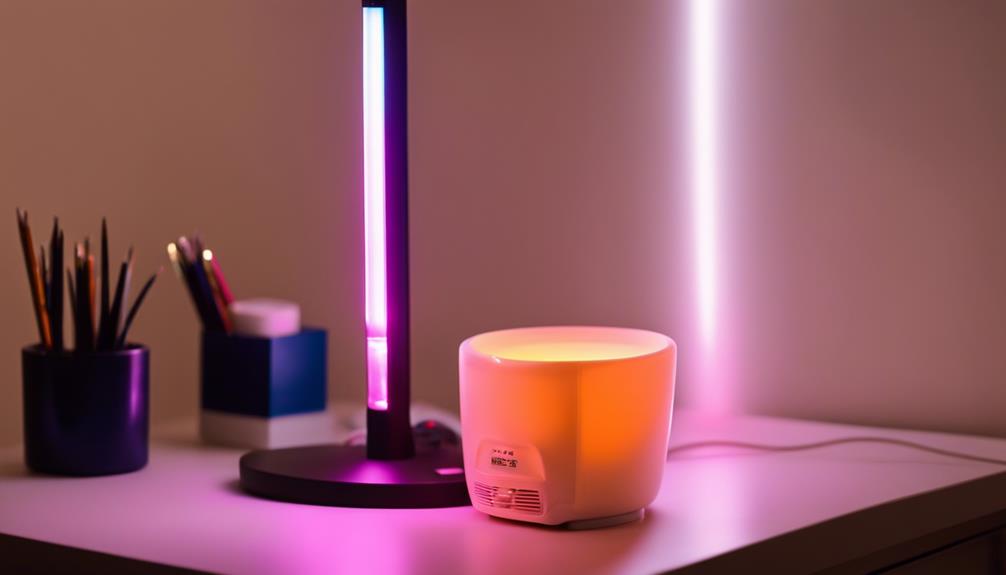
LED nail lamps are known for their superior energy efficiency and cost-effectiveness compared to UV nail lamps. This makes them a more attractive option for both professional salons and at-home users. Here are some key points to consider regarding the energy efficiency and cost benefits of LED nail lamps:
- Energy Efficiency: LED nail lamps consume less energy than UV lamps, resulting in lower electricity bills and reduced environmental impact.
- Longevity: LED bulbs have a longer lifespan than UV bulbs, reducing the frequency of replacements and maintenance costs.
- Instant On/Off: LED lamps do not require warm-up or cooling down time, saving time and energy during nail curing processes.
- Initial Investment: While LED lamps may have a higher initial cost than UV lamps, the long-term savings on energy consumption and bulb replacements make them a more cost-effective option over time.
Health and Safety Considerations
When considering nail lamp options, it is essential to prioritize health and safety considerations. Ensuring that the chosen lamp is not only efficient but also safe for use is paramount. Both UV and LED nail lamps have their own set of health and safety factors to consider.
To help you make an informed decision, below is a comparison table outlining some key health and safety considerations between UV and LED nail lamps:
| Health and Safety Considerations | UV Nail Lamps | LED Nail Lamps |
|---|---|---|
| Risk of UV exposure | Higher | Lower |
| Skin damage risk | Increased risk of skin damage and aging | Minimal risk of skin damage |
| Eye protection | UV protective eyewear required | No special eyewear needed |
| Heat generation | Can get hot during use | Remain cool throughout the curing process |
This table provides a snapshot of the health and safety aspects to consider when choosing between UV and LED nail lamps. Make sure to prioritize your well-being while enjoying beautiful nails.
Nail Health and Performance Impact
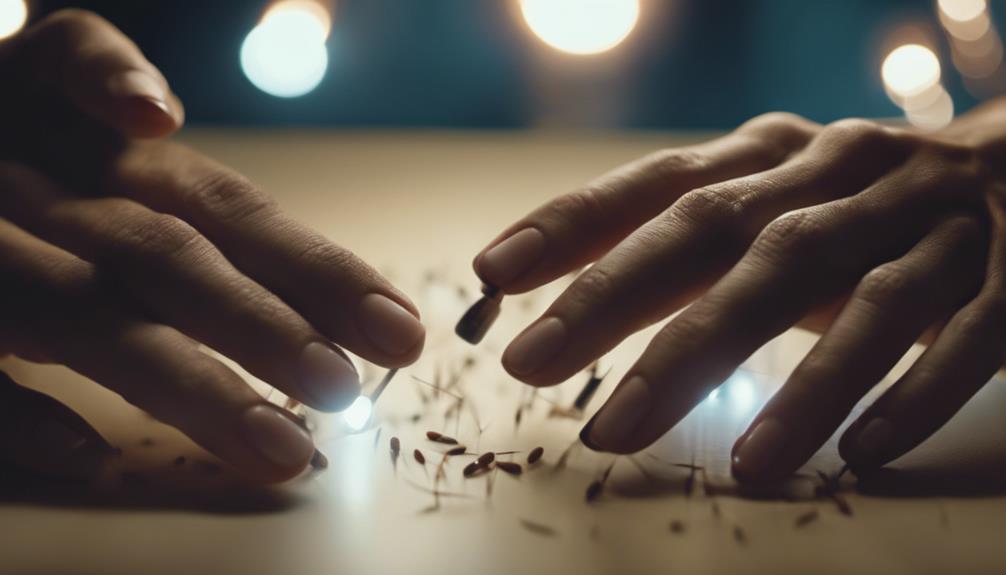
Considerations regarding the impact on nail health and performance are crucial when determining the optimal choice between UV and LED nail lamps. Both types of lamps have implications for nail health and overall performance. Here are some key points to consider:
- UV Lamps:
- Emit higher levels of UV radiation, which can potentially lead to skin damage with prolonged exposure.
- May cause the nails to become brittle and dry due to overexposure to UV light.
- LED Lamps:
- Emit lower levels of UV radiation, reducing the risk of skin damage compared to UV lamps.
- Tend to cure gel polish faster, saving time and minimizing the risk of smudges or chips.
When it comes to nail health, LED lamps are often favored for their quicker curing times and lower UV exposure. However, proper usage, including applying sunscreen on the skin and using appropriate curing times, can help mitigate the potential negative effects of UV lamps on nail health and overall performance.
Environmental Impact Analysis
An examination of the environmental impact of UV and LED nail lamps reveals significant differences in energy consumption and sustainability practices. LED nail lamps are known for their energy efficiency, consuming less power compared to traditional UV lamps. This lower energy consumption translates to reduced carbon footprint and overall environmental impact. LED technology also boasts a longer lifespan, resulting in less frequent replacements and decreased waste generation. Furthermore, LED lamps do not contain harmful substances like mercury, making them more environmentally friendly during disposal.
In contrast, UV nail lamps consume more energy and have a shorter lifespan, leading to higher electricity usage and increased waste production. The disposal of UV lamps can be challenging due to their mercury content, requiring specific handling to prevent environmental contamination. As the beauty industry shifts towards greener practices, the advantages of LED nail lamps in terms of energy efficiency and sustainability make them a more environmentally conscious choice for nail technicians and salon owners looking to reduce their ecological footprint.
Versatility and Compatibility Review
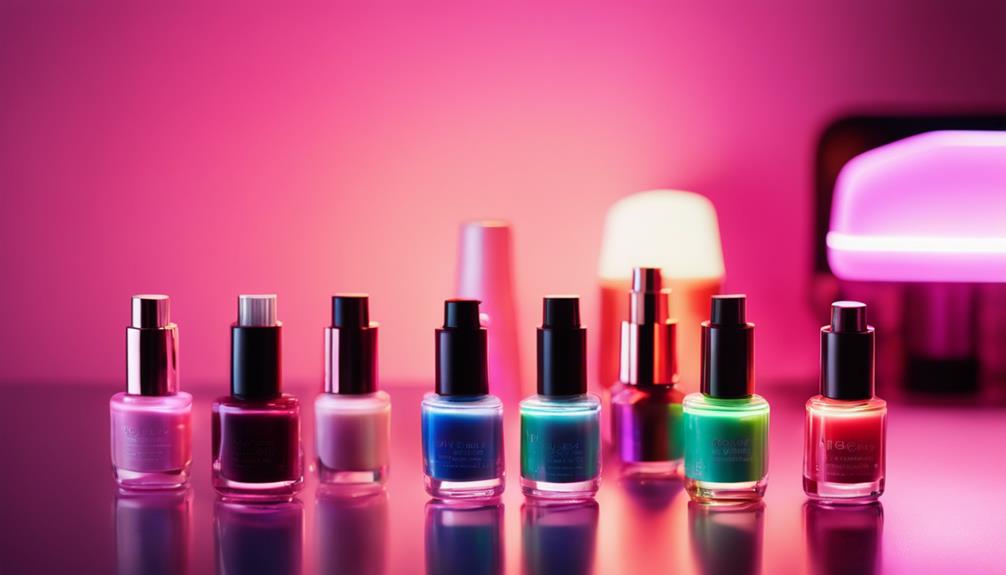
Comparing the environmental impact of UV and LED nail lamps highlights the shift towards more sustainable practices, setting the stage for a discussion on the versatility and compatibility of these technologies in the beauty industry. When it comes to versatility and compatibility, LED nail lamps have gained significant traction due to their innovative features:
- Curing Capabilities: LED lamps are compatible with a wider range of gel polish brands, curing them efficiently and effectively.
- Time Efficiency: LED lamps offer faster curing times, allowing for quicker manicures and pedicures.
- Longevity: LED bulbs have a longer lifespan compared to UV bulbs, reducing the frequency of replacements.
- Portability: LED nail lamps are generally smaller and lighter, making them more portable for on-the-go beauty professionals.
These features make LED nail lamps a versatile and compatible choice for salons and individuals looking to streamline their nail care routines while reducing environmental impact.
Frequently Asked Questions
Are UV or LED Nail Lamps More Suitable for Individuals With Sensitive Skin or Allergies?
Individuals with sensitive skin or allergies may find LED nail lamps more suitable due to their lower UV exposure compared to UV lamps. LED lamps emit less heat, minimizing skin irritation and potential allergic reactions.
How Often Should the Bulbs in UV and LED Nail Lamps Be Replaced?
To maintain optimal performance, UV and LED nail lamp bulbs should be replaced every 6 months. Regular replacements ensure consistent curing efficiency, preventing potential skin or eye irritations. Follow manufacturer guidelines for specific recommendations to enhance nail care results.
Can UV or LED Nail Lamps Be Used for Curing Gel Nail Polish on Acrylic Nails?
Both UV and LED nail lamps can effectively cure gel nail polish on acrylic nails. UV lamps are traditional and offer versatility, while LED lamps are quicker and more energy-efficient. Choose based on personal preference and salon needs.
Are There Any Potential Harmful Effects of Using UV or LED Nail Lamps on the Eyes?
Exposure to UV or LED nail lamp light during manicures can pose potential risks to the eyes, such as damage to the cornea and retina. It is advisable to wear protective eyewear to minimize the harmful effects of these devices.
Do UV or LED Nail Lamps Emit Any Harmful Chemicals or Substances Into the Air During Use?
During use, both UV and LED nail lamps emit minimal to no harmful chemicals or substances into the air. These innovative technologies prioritize safety, allowing for a pleasant nail treatment experience without environmental concerns.

